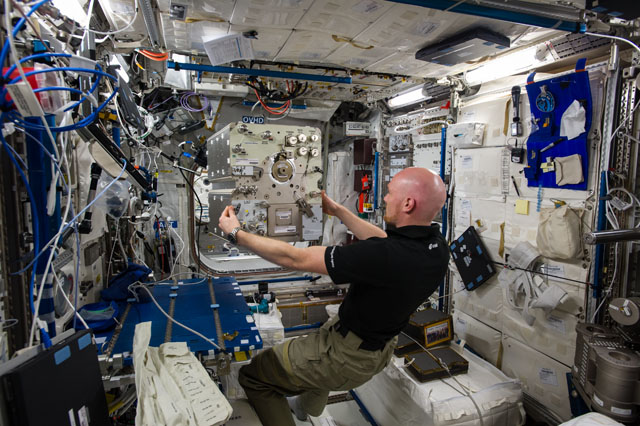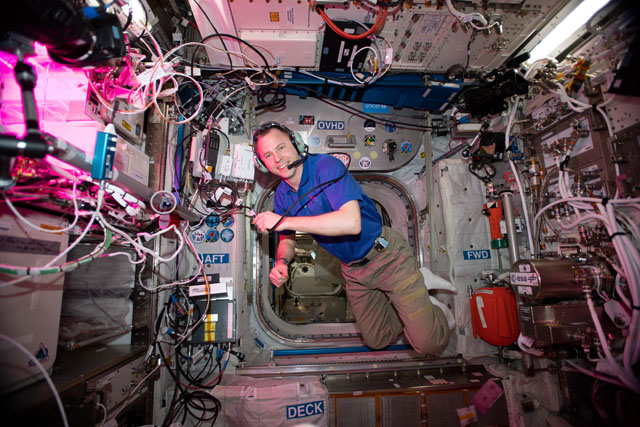Space Station Top News: Nov. 18, 2021
The thermophysical properties of an industrial metal used in high temperature applications were recently obtained in ESA’s (European Space Agency’s) Electromagnetic Levitator (EML) aboard the International Space Station (ISS). This demonstrates the wide applicability of EML for studies of liquid metallic alloys and provides insights that can improve manufacturing processes for items like jet engine components.
For scientists observing liquid metals, cooling them in weightlessness removes the unnecessary complexity to reveal the core processes of physics. EML takes things a step further and suspends the metals in mid-air as they melt and solidify, which allows researchers to examine their properties for a much longer period of time than would be possible in a terrestrial lab or short-duration microgravity facility. Properties of a Gamma Titanium-Aluminide in its liquid phase were recently characterized in EML. This material is an advanced structural material for use in high temperature applications like jet engine turbine blades. Results showed larger a surface tension value of the sample on station than in parabolic flight, thicker viscosity than predictive models, high heat capacity, and stable electrical resistivity to high temperatures. This demonstrates that the thermophysical properties of the metal are not affected by turbulent conditions created by stirring in the EML, which can benefit the additive manufacturing industry.

ESA astronaut Alexander Gerst is shown in the Columbus module of the International Space Station during the installation of the Electromagnetic Levitator, or EML. The EML multi-user facility is designed for container-less materials processing in space. Credits: NASA
***
New results from the space-station-mounted NICER telescope have helped scientists determine the spin and mass of a black hole first observed by the Japan Aerospace Exploration Agency’s, or JAXA’s, MAXI telescope. Black holes are a critical part of the formation and evolution of galaxies, and a deeper examination of them helps us better understand our universe.
After the discovery of black hole MAXI J1820+070 in 2018, researchers charted the environment surrounding it using NICER. The brightness of the X-ray source triggered multi-wavelength campaigns from different observatories. A recent paper used new NICER data and analysis to determine the particular radius and spin components of the black hole, as well as explain the data in the context of the Relativistic Precession Model (RPM). The RPM is used for determining a spin and mass for the black hole.

***
Last week, station crew members conducted an ISS ham radio session with South Yarra Primary School in South Yarra, Victoria, Australia. This experience helps inspire interest in science, technology, engineering, and math, or STEM.
ISS ham radio engages students, teachers, parents, and other members of the community in direct communication between astronauts and ground-based ham radio units. Before a scheduled session, students learn about radio waves, amateur radio, and related science topics and conduct research to prepare their questions for the crew. In the past 21 years, more than a quarter of a million people have participated in station HAM radio contact.
Explore more stats from the past 21 years of ham radio on station.

NASA astronaut Nick Hague floats inside the station’s Columbus laboratory module during a HAM radio session using the station’s call sign NA1SS. Credits: NASA







